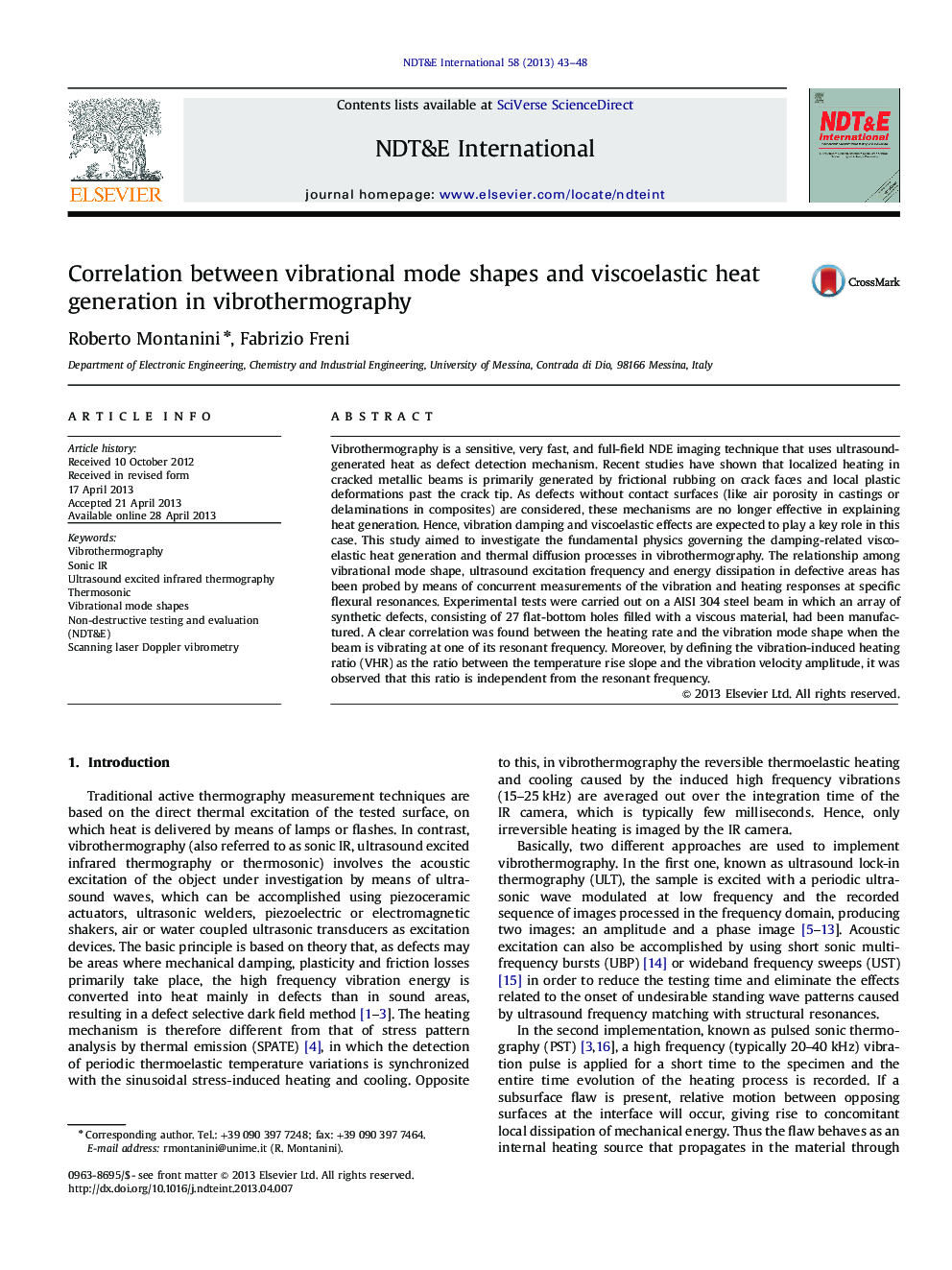| Article ID | Journal | Published Year | Pages | File Type |
|---|---|---|---|---|
| 295131 | NDT & E International | 2013 | 6 Pages |
Vibrothermography is a sensitive, very fast, and full-field NDE imaging technique that uses ultrasound-generated heat as defect detection mechanism. Recent studies have shown that localized heating in cracked metallic beams is primarily generated by frictional rubbing on crack faces and local plastic deformations past the crack tip. As defects without contact surfaces (like air porosity in castings or delaminations in composites) are considered, these mechanisms are no longer effective in explaining heat generation. Hence, vibration damping and viscoelastic effects are expected to play a key role in this case. This study aimed to investigate the fundamental physics governing the damping-related viscoelastic heat generation and thermal diffusion processes in vibrothermography. The relationship among vibrational mode shape, ultrasound excitation frequency and energy dissipation in defective areas has been probed by means of concurrent measurements of the vibration and heating responses at specific flexural resonances. Experimental tests were carried out on a AISI 304 steel beam in which an array of synthetic defects, consisting of 27 flat-bottom holes filled with a viscous material, had been manufactured. A clear correlation was found between the heating rate and the vibration mode shape when the beam is vibrating at one of its resonant frequency. Moreover, by defining the vibration-induced heating ratio (VHR) as the ratio between the temperature rise slope and the vibration velocity amplitude, it was observed that this ratio is independent from the resonant frequency.
